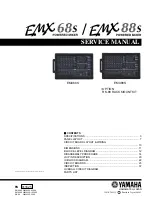
OmniRat v1.0
Manufacturers and product names are mentioned solely for circuit identification, and where applicable their trademarks are the
property of their respective owners who are in no way associated or affiliated with the author. No cooperation or endorsement
is implied.
5
Build sequence
Before starting with this section, make sure you have read the configurations section first!
Soldering this board can be very complicated for some people since the solder pads are very close
together. Use a magnifying glass to make the job easier.
The trick to soldering a PCB is to work from small to big components. My building sequence
suggestions in this section are based on the parts I used myself. Sometimes some components are
smaller (or bigger) so always use your own common sense and change the order accordingly. Usually
capacitors can differ a lot in size depending on their rating and value.
Note:
Do not blow on your solder in an attempt to cool it down. That can result in a bad join that
might corrode! Also take extra care not to short components.
Start by soldering the jumpers (if applicable) , resistors and small diodes (not LEDs if used). If needed
you can create a jumper using a spare piece of lead from a resistor or diode.
If you want to experiment with another transistor for
Q1
then you could socket it instead of soldering
it
to the board. You’ll need a
some 20 SIL sockets, break off the 3 pin socket and solder it to the
board. Now is the time to solder this socket on the PCB as well as the socket for the IC. Place the
transistors and IC once you are finished with all soldering and off board wiring!
Now continue by soldering the MLCC, small SMF/MKT/Wima capacitors then solder the internal trim
pot (
VR1
). Now finish by soldering the transistors (if not socketed), the bigger SMF/MKT/WIMA and
the electrolytic capacitors.
I suggest you now drill the holes in your enclosure so you can use it during the off board wiring. This
PCB is very sensitive to noise! Prevent crossing input and output wires and keep the wires as short as
possible (and/or use shielding on the input and output).
Besides the components mentioned in the components table, you will need:
•
1 stereo input kack and 1 mono output jack
.
•
2,1mm DC jack
(isolated).
•
22 gage stranded hook-up wire.
•
LED holder.
This enables you to mount the LEDs in the enclosure.
•
Footswitch 3PDT
(9 pins)
•
Hammond 1590B
or
125B
style case (or similar) in your favorite color. You can of course
experiment with other enclosures, but measure twice before you start drilling!



























